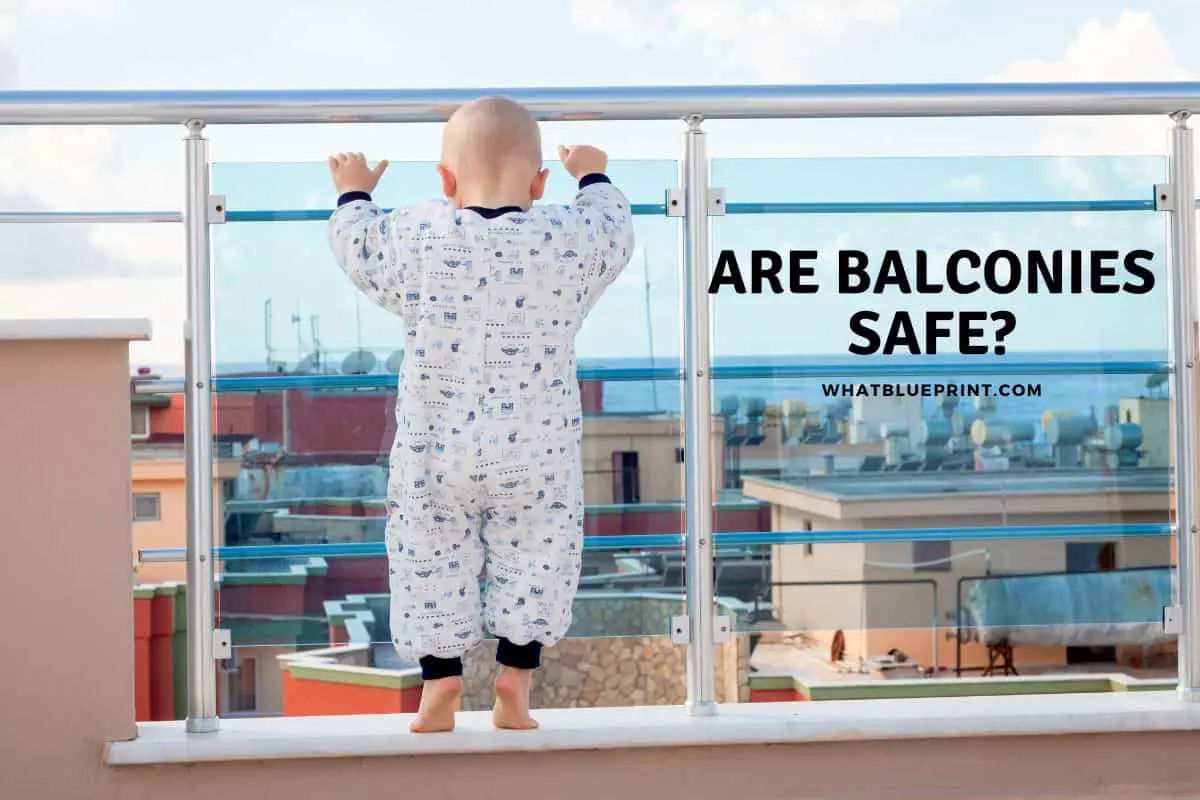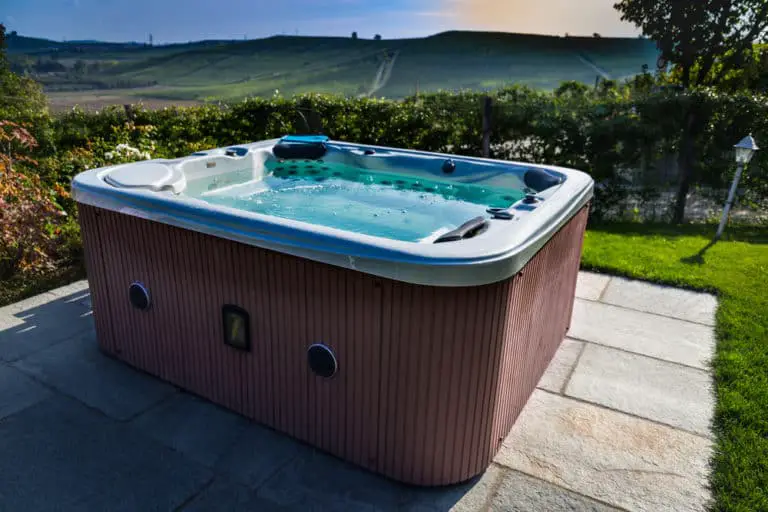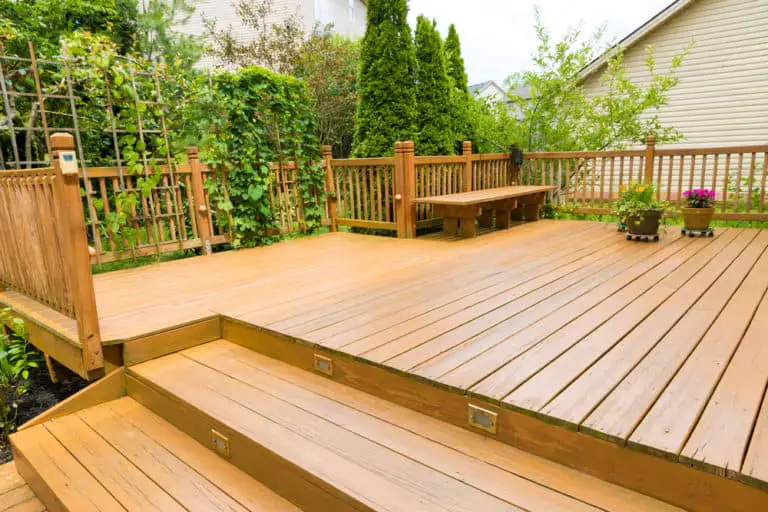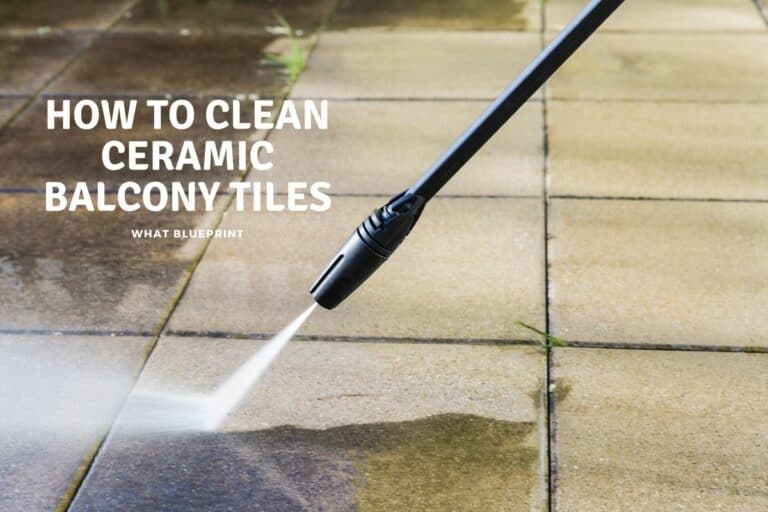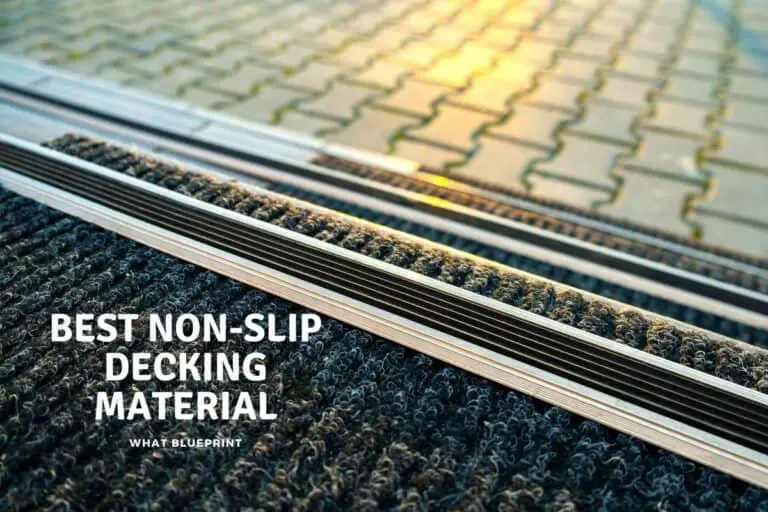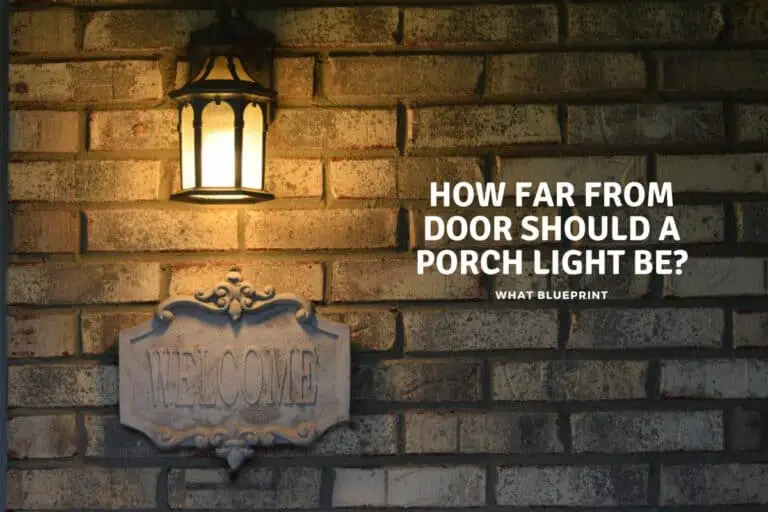Are Balconies Safe?
A balcony is a common feature in many homes and other building types, but many people are concerned about how safe these structural elements are. Balconies are always constructed high above the ground, and this can be a severe risk in many circumstances. This leads many people to wonder if a balcony is safe.
Due to their risk of fall and exposure to the elements balconies can be dangerous. Balconies can be made safer by installing safety structures like proper support, high railings, laminated safety glass and proper locks. Attention should also be paid to weight limits and how people use the balcony.
Balconies are built onto many houses and buildings internationally. These architectural elements are very useful; they are aesthetically pleasing, they add to the value of the building, and they can change the way a building is used and the way it feels, but are balconies safe? Let’s explore the elements of a balcony that may make it unsafe and how to make a structure like this significantly safer.
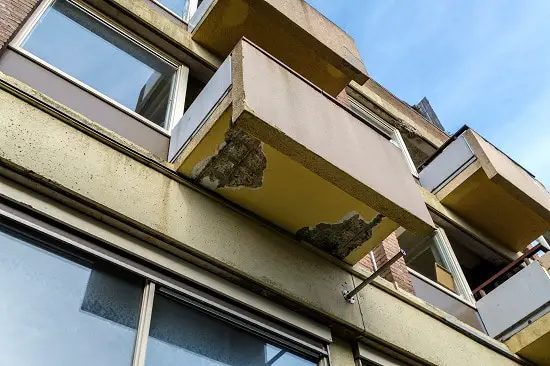
Are Balconies Safe?
Let’s begin by answering the main question that people ask about balconies: are balconies safe?
The truth is that a balcony can be dangerous, and it does pose a significant risk in several circumstances, but the real danger of a balcony is determined by the following:
- how it is built,
- what features it has,
- how careful you are when using it.
The reality is that a balcony is a platform that is built high above the ground, and some balconies can be exceptionally high. The purpose of a balcony is to have a place where a person can step outdoors, even if they do not have access to a garden, and to have an outdoor area that is held above the ground floor of a building or house, especially in apartment blocks where space is limited.
A balcony is usually designed to be as open as possible to enable anyone who uses it to enjoy the view that comes along with a balcony, as well as the fresh blowing air. However there has become a new trend in the last few years for something called an enclosed balcony, which we explore in more detail here.
All of these features mean that a balcony is inherently dangerous simply because it is possible to fall from the balcony, which can cause severe injury or death depending on how high the balcony is from the ground.
This is an unfortunate reality but a very real risk.
However, with that said, there are ways to make a balcony safer, and there are always improvements that can be made to a balcony to improve its safety of it, regardless of its construction or who uses the structure.
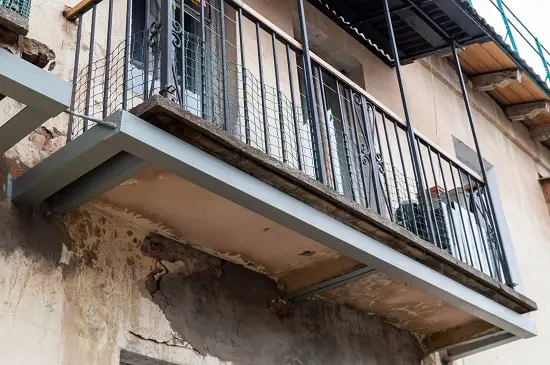
How To Tell If Your Balcony Is Safe Or Not
All balconies can be dangerous, mainly because they are so high from the ground. However, some balconies are more dangerous than others, and many people who use a building with a balcony wonder how to tell if a balcony is safe or not.
There are several ways to determine the safety of a balcony. If the balcony is poorly built or not made to be as structurally sound as possible, it is generally considered to be unsafe.
Any balcony that does not have a sturdy railing, banister, or wall surrounding it is exceedingly dangerous, as the possibility of falling from the balcony is considerably higher.
If a balcony is built well with good, sturdy railing, it is considered to be much safer than otherwise. If a balcony is completely enclosed, it is as safe as a balcony can possibly be, but it does lose some of its character overall.
Any balcony that is able to be securely locked is far safer than a balcony that is easy to access, as it keeps anyone who should not be using the balcony on their own from doing so.
If you walk out onto a balcony and immediately feel unsettled or insecure, it is safe to say that the balcony is unsafe. If it wobbles, shakes, shudders, or moves at all when you walk on it, it is not safe, and if any part of the balcony creaks or groans while you move about on it, you should not use the balcony and seek professional advice.
The truth is that any balcony that is not perfectly safe should not be used, as it is really not worth the risk in any circumstance.
The lack of a sturdy barrier, wall, strengthened glass or railing makes a balcony very unsafe, as does slippery flooring, a low wall or railing, lack of structural support, or inadequate construction overall and the most common danger which is user misuse!
Any balcony that has any of these hazards is considered to be dangerous and should be avoided.
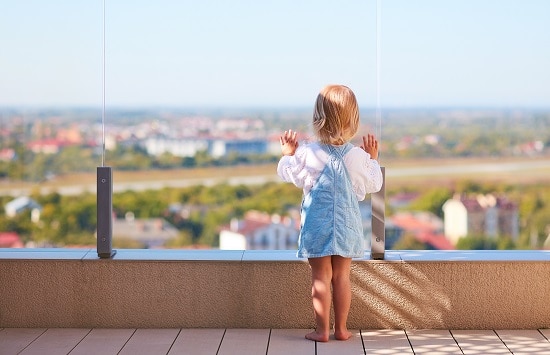
Do Not Overload Your Balcony
One of the most overlooked safety elements when it comes to using a balcony, and making sure it remains safe is its load bearing weight limits. Although these are usually considerably more than most people would ever dream of putting on it there are a couple of scenarios where this weight limit can be exceeded quite easily.
These are the installation or hot tubs, or the use of inflatable (larger size usually) pools on to balconies. Both of which it is essential to seek either developers or structural engineer approval and advice. As Water is incredibly heavy and can weaken or stress even solid cantilevered balconies.
Although balconies can differ in the weight they are designed to support a general figure is around 60 pounds per square foot, with water weighing 62 pounds per cubic foot you can already see where problems may arise
How To Make A Balcony Safer
Now that we have properly identified some of the features of a balcony that can make it highly unsafe to use let’s take the time to explore some of the best ways to make a balcony safer for use, regardless of its overall construction.
Considering these features will always make a balcony a safer structure:
Proper Structural Support
Among the most dangerous aspects of a balcony is improper to poor structural support. This is usually more prevalent on balconies that are constructed off the side of a building, especially those that are made from a steel frame, rather than those that are built onto the roof of a lower section of the building and cantilevered out from within the building.
A balcony that does not have good structural support is likely to wobble or shake, which can cause a person to lose their balance or their footing and fall. A balcony that lacks this structural integrity may allow a person to fall through it, or if the support is weakened maybe by being held by posts rather than cantilevered, it could be at risk of collapse.
A balcony without proper support is very dangerous. Ensure that your balcony is properly constructed and well reinforced to ensure that it is safe for anyone to use it, regardless of its design.
If you have a glass balcony, or glass panels used in the construction of your balcony then these should be reinforced, toughened or laminated. We have an two articles on glass for balconies and other structural advice here on the site for you to check out. We have linked them below.
Make Use Of Appropriate Railing, Banister, Or Wall
A well-constructed banister, railing, or wall is a critical safety feature for any balcony. If your balcony does not have a very sturdy feature such as these, it is likely that a person will fall from the balcony and injure themselves badly.
There are regulations and rules for the construction of balconies and railing, banister, or wall should 42 inches for commercial and 36 inches high for residential properties as we quote from out article below.
The generally stipulated height for balcony railings is 42” above the balcony deck for commercial properties. In residential homes, railings are permitted to be slightly lower at 36”. The railing must extend to this height and then be capped by a horizontal railing for easy gripping
Perfect Outdoor Spaces
A railing or banister that has vertical structures should not have gaps in it that a child could fit through, and any such feature on a balcony must be properly secured in every way to ensure that it does not wobble, rattle or bend at all.
A sturdy surround structure like this is the best way to keep a balcony safe while also keeping the balcony aesthetically pleasing and allowing it to fulfill all of its intended purposes, such as maintaining a good view from the balcony.
Use Appropriate Flooring
The flooring used on a balcony is another essential safety element to consider. A balcony that has a slippery floor can be incredibly dangerous.
Be sure that you use an outdoor tile on the balcony that is designed to be non-slip and as stable as possible. This will prevent people from losing their footing on the balcony. Keep them from slipping and will help to prevent accidents, especially in wet conditions.
This is especially important if the balcony may be used after rain or after irrigation sprinklers are used near the balcony.
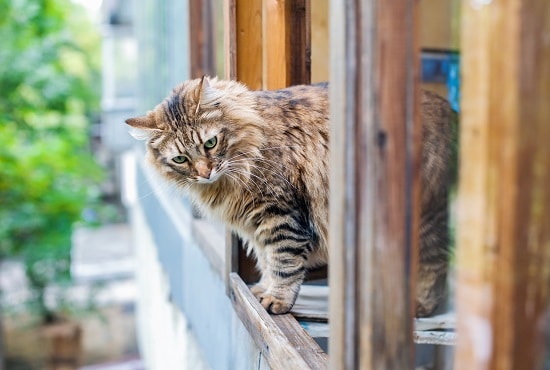
Keep The Balcony Securely Locked
Another important consideration regarding the safety of a balcony is how securely the access door to the balcony can be closed and locked. If a balcony cannot be locked, it is impossible to keep children, high-risk individuals, or pets from using the balcony without supervision.
Such people should only be permitted onto the balcony if they are well-supervised by a competent adult, and if the balcony door does not lock, this is impossible to ensure.
Install a good, sturdy lock on the balcony door, and keep the key to it somewhere that is not obvious for anyone to find.
This is an important balcony safety measure that is often overlooked by many homeowners, but it is a simple way to make any balcony as safe as possible.
Enclose The Balcony
if you want to ensure that your balcony is as safe as possible, regardless of how it is designed or what it is used for, the best option is to enclose the balcony; this can be done by installing a secure roof and walls on the balcony, and making use of sliding doors to maintain the unimpaired use of the structure.
Keeping the balcony enclosed is the best way to ensure that everyone who uses it is as safe as possible, and this will also increase the usefulness of the balcony as well, as more items can be placed on it, stored on it, and it can be used in any season and any weather conditions.
However, it does take away the outdoor aspect of your home.
Make sure to Maintain your Balcony
If your roof leaks you will have it fixed if the door lock fails it will be replaced, owning a home comes with a never ending list of maintenance tasks that need completing. Often overlooked in these is keeping a good eye on your balcony for defects or safety issues.
this does not have to be hours of work, but ensuring that regular maintenance is carried out when it is needed can increase the safety of your balcony as well as reduce costs of repairs further down the line.
Simple measures like ensuring railings are rust free, making the floor non slip and fixing broken tiles or floor boards can be undertaken relatively easily. However if structure issues start to arise then professional help will need and should be sought as quickly as possible both for your safety and the safety of others in your building.
This may be organised by the building management if you live in an apartment building or condominium, or it may be you need to call in a builder if you have a balcony in a private home in the first instance.
however the advice remains the same, do it as soon as issues are noticed.
Conclusion
At the end of it, no balcony that is not entirely enclosed is entirely safe. However, there are features that can be installed on any balcony that can make it much safer to use, provided that anyone who uses the structure does not behave dangerously on it.
Be sure that your balcony has all of the important safety features, including study structural reinforcement and a good railing, and never let any high-risk person use it unsupervised, and your balcony should always be safe to use and if you have any doubts or warning signs at all don’t hesitate to seek professional help to thoroughly check all the safety aspects of your balcony.
References
- https://homeguides.sfgate.com/dangers-secondfloor-balconies-84738.html
- http://iqvinc.com/is-your-balcony-safe-3-warning-signs/
- https://livinginahighrise.com/are-high-rise-balconies-safe-7-critical-high-rise-balcony-safety-tips/
- https://kiddy123.com/article/5-ways-to-improve-high-rise-balcony-safety.html

